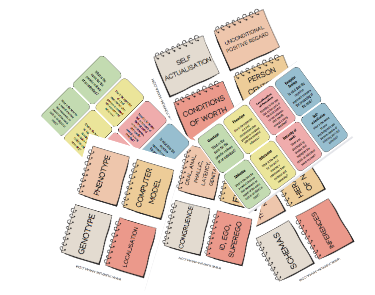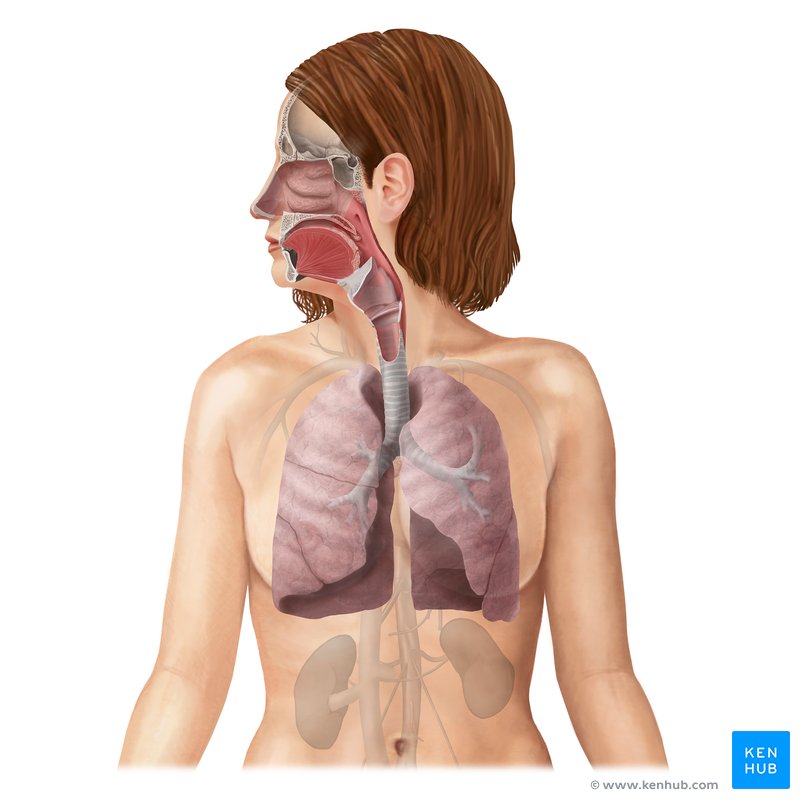Paper 2 June 2022 (Psychology A-Level AQA)- Model Answers
Approaches
1.) Describe psychosexual stages as outlined in the psychodynamic approach. ( 6 marks)
Model Answer
Psychoanalytic theory, developed by Sigmund Freud, posits that human development occurs in five stages: oral, anal, phallic, latency, and genital.
In the oral stage (0–1yr), pleasure centres around the mouth, and desire focuses on the mother's breast. The anal stage (1–3yrs) follows, where pleasure shifts to the anus, and the child engages in activities involving withholding and expelling feces. The phallic stage (3–5yrs) is marked by the focus on genital pleasure, and children experience the Oedipus/Electra complex. Latency (6–12yrs) involves resolving and repressing previous conflicts, with early years largely forgotten. Finally, the genital stage (12yrs/puberty-adulthood) emerges, where sexual desires become conscious with the onset of puberty. Unconscious conflicts at each stage must be resolved for successful progression to the next developmental phase.
2.) At a local school, teachers took part in Active Lifestyle Week to encourage students to become more active. The week involved daily staff netball matches during breaktimes and a step count challenge.
Two of the teachers were talking at the end of the week. Miss Honey said, “That was such a great week! I felt proud to win the staff step count challenge and receive the medal in assembly and demonstrate the joy of sport. My students loved watching us compete, I really think it will inspire them to be more active themselves!”
Mrs Wilson replied, “It’s alright for you, you’re young and the students like you. My students were so embarrassed to see me tripping over in netball. I think I may have put them off sport forever!”
Apart from mediational processes, use your knowledge of social learning theory to explain Miss Honey’s and Mrs Wilson’s comments. ( 6 marks)
Model Answer
Observational learning is evident in both teachers' comments, indicating a belief that their behaviour influences students. Miss Honey expresses optimism, stating, "I think it will inspire them to be more active themselves!" On the other hand, Mrs Wilson holds a contrasting view, expressing concern that she may have deterred students from sport forever, saying, "I think I may have put them off sport forever!"
The concept of modelling is underscored as teachers serve as role models due to their higher status in school. Identification plays a role, with students more likely to identify with Miss Honey, given Mrs Wilson's acknowledgment of Miss Honey's popularity with students: "you’re young and the students like you." Vicarious reinforcement is illustrated when Miss Honey's success in the staff step count challenge serves as a positive example, while Mrs Wilson's mishap in netball dissuades students from imitating her and adopting a more active lifestyle.
3.) At a local school, teachers took part in Active Lifestyle Week to encourage students to become more active.
Whether or not students learn to be more active could depend on mediational processes.
Explain how mediational processes might be involved in the students becoming more active. ( 4 marks)
Model Answer
Mediational processes play a crucial role in students becoming more active during Active Lifestyle Week at the local school.
Attention is drawn as students observe teachers engaging in active behaviours, such as participating in staff netball matches or witnessing Miss Honey receiving a step count challenge medal in assembly. Retention is reinforced through repeated exposure to these activities, including emotionally impactful events like Mrs Wilson's memorable mishap in netball. Reproduction is facilitated as students can easily replicate the modelled active behaviours, particularly with activities like the step count challenge that require minimal equipment or fitness levels. Finally, motivation becomes a key factor, with students more likely to adopt an active lifestyle if the perceived rewards, such as winning a medal or experiencing the joy of sport, outweigh any associated costs, such as the humorous incident of tripping over in netball.
4.) Discuss self-actualisation and/or conditions of worth in explaining human behaviour.( 8 marks)
Model Answer
Self-actualisation, the pinnacle of Maslow's hierarchy of needs, revolves around achieving psychological growth, fulfilment, and satisfaction in life. It represents the realisation of one's full potential. In contrast, conditions of worth, as proposed in humanistic psychology, are constraints individuals perceive as necessary to gain positive regard from significant others, potentially leading to psychological issues.
One strength of the humanistic approach in general is the real world practical applications. Real world practical applications focus on how useful an approach is in helping individuals in society.For example, Carl Rogers, a prominent figure in humanistic psychology, advocated for therapists to offer unconditional positive regard to clients. This approach aims to dismantle conditions of worth, fostering an environment where individuals can explore and accept their authentic selves. In a real-world application, particularly in counselling, practitioners adopting Rogerian principles strive to create an atmosphere of acceptance and non-judgment. By doing so, they seek to help clients overcome imposed conditions of worth and progress towards self-actualisation. This client-centered approach focuses on fostering genuine self-discovery and growth by acknowledging and supporting the individual's inherent worth and potential.
Biopsychology
1.) Which of the following neurons carries electrical impulses towards the brain? ( 1 mark)

Model Answer
D – Sensory neuron
2.) Which one of the following is not a way of studying the brain? (1 mark)

Model Answer
A – Electrocardiogram (ECG)
3.) Describe the divisions of the nervous system. (6 marks)
Model Answer
The nervous system is divided into two main components: the central nervous system (CNS) and the peripheral nervous system (PNS). The CNS comprises the brain and spinal cord, serving as the command center for information processing. The PNS is further divided into the somatic nervous system, responsible for sensory and motor functions, including reflex actions, and the autonomic nervous system (ANS), which operates largely involuntarily.
The ANS is subdivided into the sympathetic nervous system (SNS) and the parasympathetic nervous system (PNS). The SNS activates the "fight or flight" response, preparing the body for immediate action. In contrast, the PNS counterbalances the SNS, promoting "rest and digest" functions. Together, these divisions of the nervous system coordinate complex processes, regulating both conscious and unconscious bodily functions.
4.) Discuss localisation of function in the brain. (16 marks)
Model Answer
The basic neuroanatomical organisation of the brain involves the hemispheric lateralization of functions, where the left hemisphere predominantly governs the right side of the body and vice versa, reflecting contralateral organisation. This dynamic interplay allows for the specialisation of cognitive processes, a foundational concept in understanding how the brain efficiently processes information. As well as this,
distinct brain regions are assigned specific functions, showcasing the brain's remarkable localisation of function. Motor functions, crucial for movement, find their place in the frontal lobes. Somatosensory processing, responsible for interpreting sensory information from the body, predominantly occurs in the parietal lobes. Visual processing is concentrated in the occipital lobes, while auditory functions are situated in the temporal lobes. Language, a complex cognitive ability, involves Broca's area for production and Wernicke's area for comprehension, with a notable left hemisphere dominance for right-handed individuals.
Each specialised brain centre serves a critical role in facilitating human experience. Motor areas enable voluntary movements, somatosensory centers interpret tactile sensations, and visual and auditory centers process information from the external environment. Language centres, in particular, contribute to the intricate processes of communication and comprehension, underscoring the intricate nature of the brain's localisation of functions.
One issue of taking this approach to understanding the different functions of the brain is it doesn’t account for individual differences.
Individual differences refer to the unique variations and distinctions in characteristics, behaviors, or traits among individuals. Left-handed individuals, for example, may exhibit more distributed language functions, challenging the notion of strict left hemisphere dominance. This highlights the need to consider variability in brain organisation, acknowledging that a one-size-fits-all approach may not capture the full spectrum of cognitive diversity.
As well as this, despite its explanatory power, the localisation of function has faced criticism for its reductionist tendencies. Reductionism is the philosophical approach that seeks to explain complex phenomena by breaking them down into simpler, more fundamental components or elements. Isolating specific functions to discrete brain regions may oversimplify the intricate nature of cognitive processes. The brain operates as a network, and reductionism risks neglecting the dynamic interactions and interconnectivity that contribute to holistic cognitive functions. This debate underscores the importance of adopting a more nuanced perspective when interpreting the localisation of function in the brain.
Research Methods
1.) A controlled observation was designed to compare the social behaviours of pre-school children of working parents and pre-school children of stay-at-home parents. The sample consisted of 100 children aged three, who were observed separately. Half of the children had working parents and the other half had stay-at-home parents.
The observation took place in a room which looked like a nursery, with a variety of toys available. In the room, there were four children and one supervising adult. Their behaviour was not recorded.
Each child participant was brought into the room and settled by their parent. The parent then left to sit outside. Each child participant’s behaviour was observed covertly for five minutes while they played in the room.
The observation was conducted in a controlled environment and a standardised script was used when the children and their parents arrived.
Explain why the researcher used a controlled observation and a standardised script in this study. ( 4 marks)
Model Answer
The researcher employed a controlled observation and a standardised script in this study to ensure a high level of control and minimize potential biases. The use of a standardised script ensured consistency in the greeting given to children and their parents upon arrival, preventing unintentional variations that could introduce bias. Without a standardised script, the researcher's welcome might inadvertently vary, possibly incorporating child-friendly vocabulary that could impact the child's anxiety levels, potentially influencing their social behavior during the observation. By employing these measures, the study aimed to create a controlled and standardised environment, enhancing the reliability and validity of the observed social behaviors among preschool children with working and stay-at-home parents.
2.) Identify one limitation of controlled observations.( 1 Mark)
Model Answer
One limitation of controlled observations is that they lack ecological validity, as the controlled setting may not reflect real-life situations, leading to less natural behavior that may not be applicable to everyday life.
3.) A controlled observation was designed to compare the social behaviours of pre-school children of working parents and pre-school children of stay-at-home parents. The sample consisted of 100 children aged three, who were observed separately. Half of the children had working parents and the other half had stay-at-home parents. The observation took place in a room which looked like a nursery, with a variety of toys available.
In the room, there were four children and one supervising adult. Their behaviour was not recorded.
Each child participant was brought into the room and settled by their parent. The parent then left to sit outside. Each child participant’s behaviour was observed covertly for five minutes while they played in the room.
The observation was conducted in a controlled environment and a standardised script was used when the children and their parents arrived.
The researcher used two trained observers to record the social behaviours of each child during the observation.
Give two behavioural categories that the observers could have used in the observation to assess the pre-school children’s social behaviour. Explain why your chosen categories are appropriate.( 4 marks)
Model Answer
The two behavioral categories that the observers could have used in the observation to assess the pre-school children's social behavior are "child smiles at another child" and "child shares toys." These categories are appropriate as they focus on observable, objective, and visible social behaviors, ensuring that the assessment is specific and not open to interpretation. Additionally, they are mutually exclusive, meaning a child can exhibit one behavior without it overlapping with the other, providing clarity in the evaluation of social interactions during the controlled observation.
4.) A controlled observation was designed to compare the social behaviours of pre-school children of working parents and pre-school children of stay-at-home parents. The sample consisted of 100 children aged three, who were observed separately. Half of the children had working parents and the other half had stay-at-home parents. The observation took place in a room which looked like a nursery, with a variety of toys available.
In the room, there were four children and one supervising adult. Their behaviour was not recorded.
Each child participant was brought into the room and settled by their parent. The parent then left to sit outside. Each child participant’s behaviour was observed covertly for five minutes while they played in the room.
The observation was conducted in a controlled environment and a standardised script was used when the children and their parents arrived.
The researcher used two trained observers to record the social behaviours of each child box during the observation.
Describe how the observers could use time sampling to record the social behaviour of each child during the five-minute period. ( 4 marks)
Model Answer
The observers could use time sampling by recording the child's behavior at set time intervals during the five-minute period, for example, every 20 seconds. At these specified intervals, the observers would tick or mark one or more categories from the behavioral checklist based on the exhibited behavior, such as "smiling at another child" or "talking to another child." Behaviors observed in between the time sampling frames would be ignored and not recorded, ensuring a systematic and focused approach to capturing social behaviors during the observation.
5.) A controlled observation was designed to compare the social behaviours of pre-school children of working parents and pre-school children of stay-at-home parents. The sample consisted of 100 children aged three, who were observed separately. Half of the children had working parents and the other half had stay-at-home parents. The observation took place in a room which looked like a nursery, with a variety of toys available.
In the room, there were four children and one supervising adult. Their behaviour was not recorded.
Each child participant was brought into the room and settled by their parent. The parent then left to sit outside. Each child participant’s behaviour was observed covertly for five minutes while they played in the room.
The observation was conducted in a controlled environment and a standardised script was used when the children and their parents arrived.
The researcher used two trained observers to record the social behaviours of each child box during the observation.
Explain one strength and one limitation of using time sampling for this observation. ( 4 marks)
Model Answer
Time sampling may be easier to manage during observations, given the likelihood of numerous social behaviors happening within the set observation time. However, it may not be fully representative of social behaviors in 3-year-old children, as certain behaviors might be missed during the intervals, such as a child playing independently while the observer is noting behavior but later sharing toys or talking to another child outside the set time frame. This limitation suggests that time sampling may not capture the entirety of social interactions, potentially leading to an incomplete understanding of the children's social behaviors during the observation.
6.) A controlled observation was designed to compare the social behaviours of pre-school children of working parents and pre-school children of stay-at-home parents. The sample consisted of 100 children aged three, who were observed separately. Half of the children had working parents and the other half had stay-at-home parents. The observation took place in a room which looked like a nursery, with a variety of toys available.
In the room, there were four children and one supervising adult. Their behaviour was not recorded.
Each child participant was brought into the room and settled by their parent. The parent then left to sit outside. Each child participant’s behaviour was observed covertly for five minutes while they played in the room.
The observation was conducted in a controlled environment and a standardised script was used when the children and their parents arrived.
The researcher used two trained observers to record the social behaviours of each child box during the observation.
Explain how the reliability of the controlled observation could be assessed through inter-observer reliability. ( 4 marks)
Model Answer
To ensure inter-observer reliability, two observers would use the same behavioral categories, engaging in discussions to agree on the interpretation of each social behavior within the category system. Subsequently, these observers would conduct independent observations and make tallies of the same child at the same time, with the 5-minute sessions filmed for later analysis. The tally charts generated by the two observers would then be compared to check for agreement, and the correlation between their recordings would be calculated to determine the level of inter-observer reliability. Typically, researchers accept a correlation of +0.8 as a reasonable degree of reliability in observational studies.
7.) A controlled observation was designed to compare the social behaviours of pre-school children of working parents and pre-school children of stay-at-home parents. The sample consisted of 100 children aged three, who were observed separately. Half of the children had working parents and the other half had stay-at-home parents. The observation took place in a room which looked like a nursery, with a variety of toys available.
In the room, there were four children and one supervising adult. Their behaviour was not recorded.
Each child participant was brought into the room and settled by their parent. The parent then left to sit outside. Each child participant’s behaviour was observed covertly for five minutes while they played in the room.
The observation was conducted in a controlled environment and a standardised script was used when the children and their parents arrived.
The data from the observation was summarised by converting the number of agreed observations into a total social behaviour score for each child.
The researcher then conducted a statistical test to identify whether there was a significant difference between the social behaviour scores for the children of stay-at-home parents and those of working parents.
Identify an appropriate statistical test that the researcher could use to analyse the social behaviour scores in this study. Explain three reasons for your choice in the context of this study. ( 7 marks)
Model Answer
The researcher could use the Mann-Whitney U test to analyse the social behavior scores in this study.
The psychologist is investigating a difference between the social behaviors of children with working parents compared to those with stay-at-home parents. The social behavior scores was also ordinal data.
8.) A controlled observation was designed to compare the social behaviours of pre-school children of working parents and pre-school children of stay-at-home parents. The sample consisted of 100 children aged three, who were observed separately. Half of the children had working parents and the other half had stay-at-home parents. The observation took place in a room which looked like a nursery, with a variety of toys available.
In the room, there were four children and one supervising adult. Their behaviour was not recorded.
Each child participant was brought into the room and settled by their parent. The parent then left to sit outside. Each child participant’s behaviour was observed covertly for five minutes while they played in the room.
The observation was conducted in a controlled environment and a standardised script was used when the children and their parents arrived.
Explain one reason why collecting quantitative data could reduce the validity of this study. ( 2 marks)
Model Answer
Collecting quantitative data in this study could reduce its validity because social behaviours, being complex and contextual, may lose essential detail when quantified. For instance, quantifying behaviors might overlook important contextual information, such as distinguishing between a sarcastic smile and a friendly smile, leading to a potential loss of nuance and accuracy in the interpretation of social interactions.
9.) A controlled observation was designed to compare the social behaviours of pre-school children of working parents and pre-school children of stay-at-home parents. The sample consisted of 100 children aged three, who were observed separately. Half of the children had working parents and the other half had stay-at-home parents. The observation took place in a room which looked like a nursery, with a variety of toys available.
In the room, there were four children and one supervising adult. Their behaviour was not recorded.
Each child participant was brought into the room and settled by their parent. The parent then left to sit outside. Each child participant’s behaviour was observed covertly for five minutes while they played in the room.
The observation was conducted in a controlled environment and a standardised script was used when the children and their parents arrived.
The findings of this study might have implications for the economy.
Explain one or more possible implications of this study for the economy. ( 3 marks)
Model Answer
If the study suggests increased social behavior in children of stay-at-home parents, it might have implications for the economy as parents could potentially delay returning to work until their children start school. This delay in workforce participation could lead to a negative impact on the economy, affecting productivity and contributing to potential labor force shortages.
10.) Describe features of the abstract section in a scientific report. ( 3 marks)
Model Answer
The abstract section in a scientific report is the first section and serves as a brief summary of the entire report, typically ranging from 100 to 300 words. It contains or provides a summary of the aims, methods, results, and conclusions of the study, offering a concise overview of the key aspects of the research without delving into detailed content.
11.) A new TV programme has been developed to increase positive social behaviours in pre-school children.
There is a proposal to carry out an experiment to compare the effects of the new TV programme and an existing TV programme, on positive social behaviours in pre-school children.
A sample of 500 pre-school children and their parents is available for the experiment. The parents have given consent for their children to take part in this experiment.
The experiment will take place over an 8-week period. Data on the children’s social behaviours will be gathered from the parents using a self-report method.
Design the experiment to investigate whether watching the new TV programme leads to an increase in positive social behaviours in the children, compared with watching the existing TV programme.
In your answer you will gain credit for providing appropriate details of the following:
- the type of experimental design, with justification
- a self-report method of data collection, with justification
- how to control one extraneous variable, with justification as to why this would need to be controlled.
( 12 marks)
Model Answer
For this experiment, an independent groups design would be appropriate, where half of the 500 pre-school children would watch the new TV programme, while the other half would watch the existing TV programme. This design is justified as it allows for a clear comparison between the two groups, minimizing the potential for contamination or carryover effects that might occur in a repeated measures design where all children would watch both programs. The independent groups design ensures that each child experiences only one type of TV programme, providing a straightforward comparison of the effects.
To gather data on the children's social behaviours, a structured questionnaire would be an appropriate self-report method. Parents would be asked to report on observable behaviors related to positive social interactions, providing quantitative data. The questionnaire would include critical questions assessing specific social behaviors such as sharing, cooperation, and communication. This method is justified as it allows for efficient data collection from a large sample, ensuring practicality and a high response rate. Structured questionnaires also facilitate standardized data collection, reducing variability in responses and minimizing the potential for subjective interpretation.
To control for the extraneous variable of distractions during the TV show, all children would watch the program in a controlled environment with minimal distractions. This is essential because distractions could impact the children's attention and engagement with the TV programme, influencing the outcomes related to positive social behaviors. By ensuring a standardised environment for both groups, the study aims to isolate the impact of the TV programme itself on social behaviors. Failure to control this variable could introduce variability in the conditions, compromising the internal validity of the study and potentially confounding the results with external factors.











